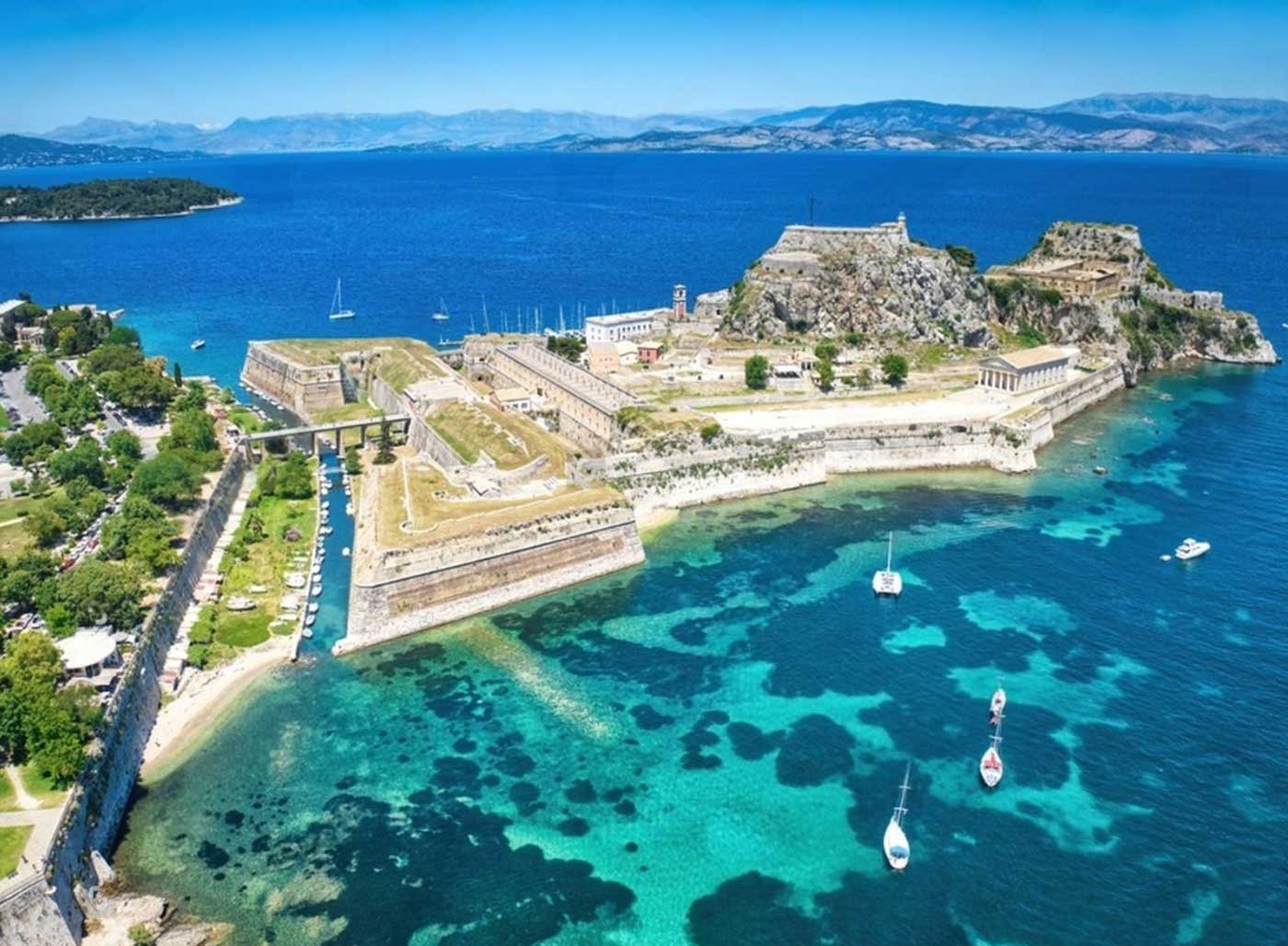Castles of Corfu
The vast history of Corfu is not limited to its old town but extends far beyond it. One of the most significant monuments showcasing the island’s rich cultural heritage is the Gardiki Castle. This particular castle is one of the lesser known yet equally important fortifications of Corfu. It was built in the 13th century by the Despot of Epirus, likely Michael II Angelos Komnenos. Located on the southwestern side of the island, near the village of Agios Matthaios, it was strategically positioned to control the southern part of Corfu. It served as a trade center for the region but was gradually abandoned following the arrival of the Venetians on the island.
The castle has an octagonal shape and is constructed from large carved stones. Although it now stands in a ruined state, significant sections of its walls remain intact, showcasing its once-powerful fortifications. Its gates are reinforced with semicircular towers, reflecting the influence of Byzantine military architecture. Gardiki, along with Angelokastro and Kassiopi Castle, formed a defensive triangle that protected Corfu from invasions, primarily by pirates and the Venetians, before the island was fully occupied by the latter in 1386.
At the northwestern edge of the island stands the twin fortress of Gardiki, the famous Angelokastro. Angelokastro is one of the most imposing castles of Corfu and among the most significant Byzantine fortresses in Greece. Perched atop a steep hill near Paleokastritsa, the castle rises 305 meters above sea level, offering panoramic views of Corfu’s western coast and the Ionian Sea. Its construction dates back to the 13th century and is attributed to Michael I Angelos Komnenos, the founder of the Despotate of Epirus. It was one of the last fortresses to resist the Venetian conquest of Corfu. The castle is characterized by its strong walls, which seamlessly blend into the rugged natural terrain of the rock. Within its ruins, remnants of buildings, water reservoirs, and a small church dedicated to Archangel Michael can still be found. According to legend, the castle was named either after angels or the Angelos Komnenos family. Due to its strategic position, Angelokastro played a crucial role in the island’s defense, especially during the Ottoman siege of Corfu in 1571. The local population sought refuge within the fortress and successfully repelled the attacks.
Kassiopi Castle, located at the northeastern edge of Corfu near the coastal village of the same name, completes the once formidable defensive triangle. It was one of the most important Byzantine fortresses on the island, serving as a protective barrier against invasions from the Adriatic and Albania. The castle was likely built in the 13th century by the Despots of Epirus, though the area had been of strategic significance since antiquity. With the arrival of the Venetians in 1386, the fortress suffered extensive destruction, as the new rulers saw it as a potential threat to their authority. Despite this, significant sections of its walls and towers remain standing today. The castle has an irregular polygonal shape and is situated on a hill with stunning views of the Albanian coastline. Its sturdy towers and thick walls highlight its former defensive importance. Today, Kassiopi Castle is a popular archaeological site and tourist destination, ideal for sightseeing and exploration.
The castles of Gardiki, Angelokastro, and Kassiopi stand as living monuments to Corfu’s Byzantine and medieval history. Built in strategic locations, they played a crucial role in defending the island against invaders and conquerors. Although some of them are now in ruins, they continue to impress visitors with their architecture and offer breathtaking views of Corfu’s natural landscape. For visitors, these castles provide ideal destinations for exploration, historical inquiry, and admiration of the island’s rich heritage. If you are passionate about discovery and adventure, you should not miss the opportunity to uncover the hidden secrets that Corfu has to offer.





